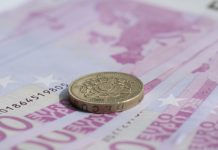- Indian Rupee (INR) is unchanged after losses last week
- Indian inflation is expected to rise to 4.89%
- US Dollar (USD) rises versus its major peers
- FOMC rate decision is due this week
The US Dollar Indian Rupee (USD/INR) exchange rate is holding steady after gaining last week. The pair rose 0.12% in the previous week, settling on Friday at 83.52. At 18:00 UTC, USD/INR trades +0.01% at 83.52 and trades in a range of 83.48 to 82.54.
The Indian rupee is holding steady after PM Narendra Modi was sworn in for a third term on Sunday, but with a weaker hand. The shock election results mean that he could face coalition challenges for the first time.
Meanwhile, inflation data is coming into focus. It is expected to show that consumer prices likely snapped a downtrend in May due to rising food costs. Indian inflation is expected to rise to 4.89% in May from April’s 4.83%. The report will be released on June 12th.
The Indian economy grew faster than expected in the January to March quarter; however, the recent national elections have rattled markets, and a weakened mandate could slow fiscal consolidation.
The US Dollar is steady against the Rupee but rising across the board. The US Dollar Index, which measures the greenback versus a basket of major currencies, trades at +0.28% at the time of writing at 105.18, after gains last week.
The USD is extending gains on rising Federal Reserve interest rate cut expectations.
Data on Friday showed that the US non-farm payroll was much stronger than expected, with 272,000 jobs created well ahead of the 185,000 forecasts and up from the 165,000 in the previous month. Meanwhile, average wage growth is right at 4.1%, overshadowed by unemployment rising from 3.9% to 4%.
Attention this week is turning to Wednesday’s Federal Reserve interest rate decision. The Fed is widely expected to leave interest rates unchanged at a 22-year high. As a result, the focus will be very much on guidance for the future path of interest rates, particularly the timing of when the first rate cut may come.
After Friday’s data, the market is pricing in a less than 50% probability of a rate cut in September, down from 70% before Friday’s jobs are jobs report.





